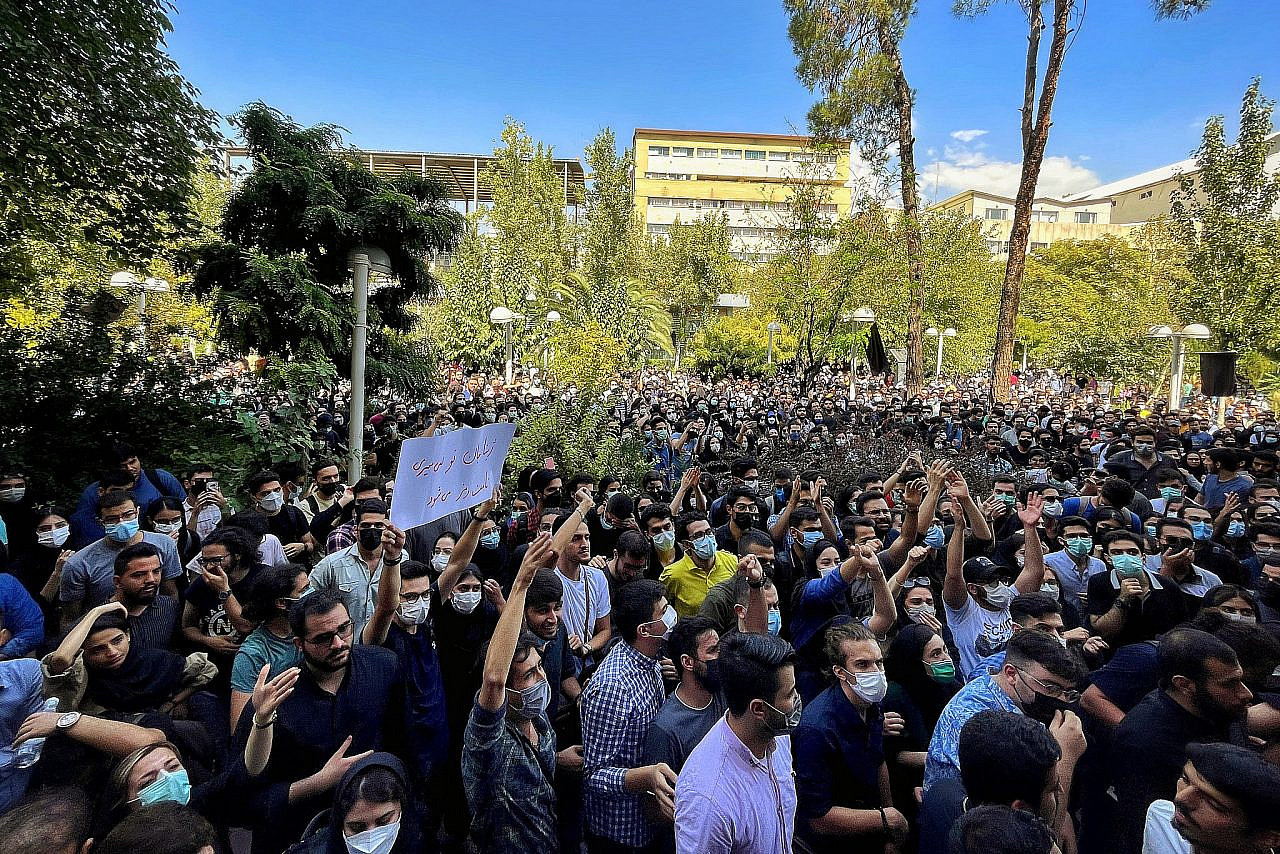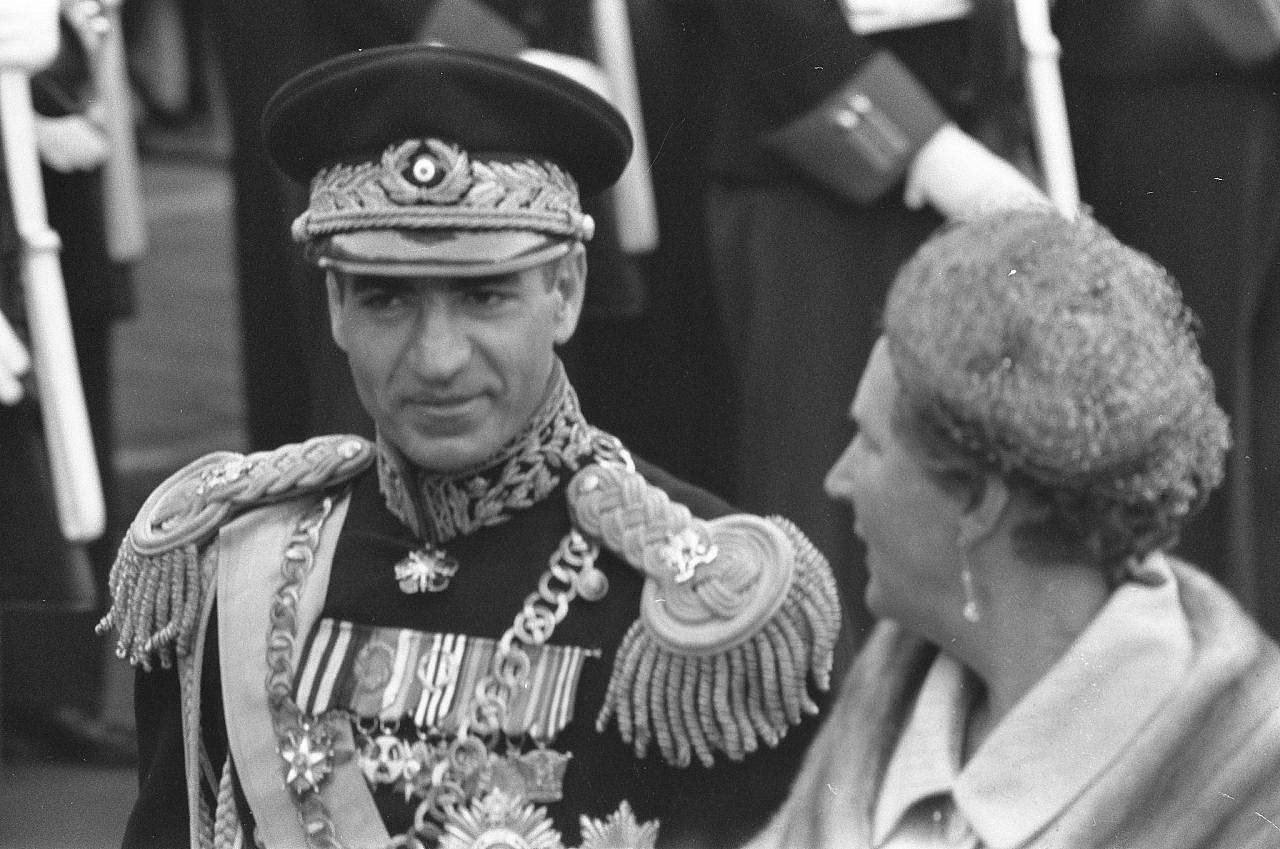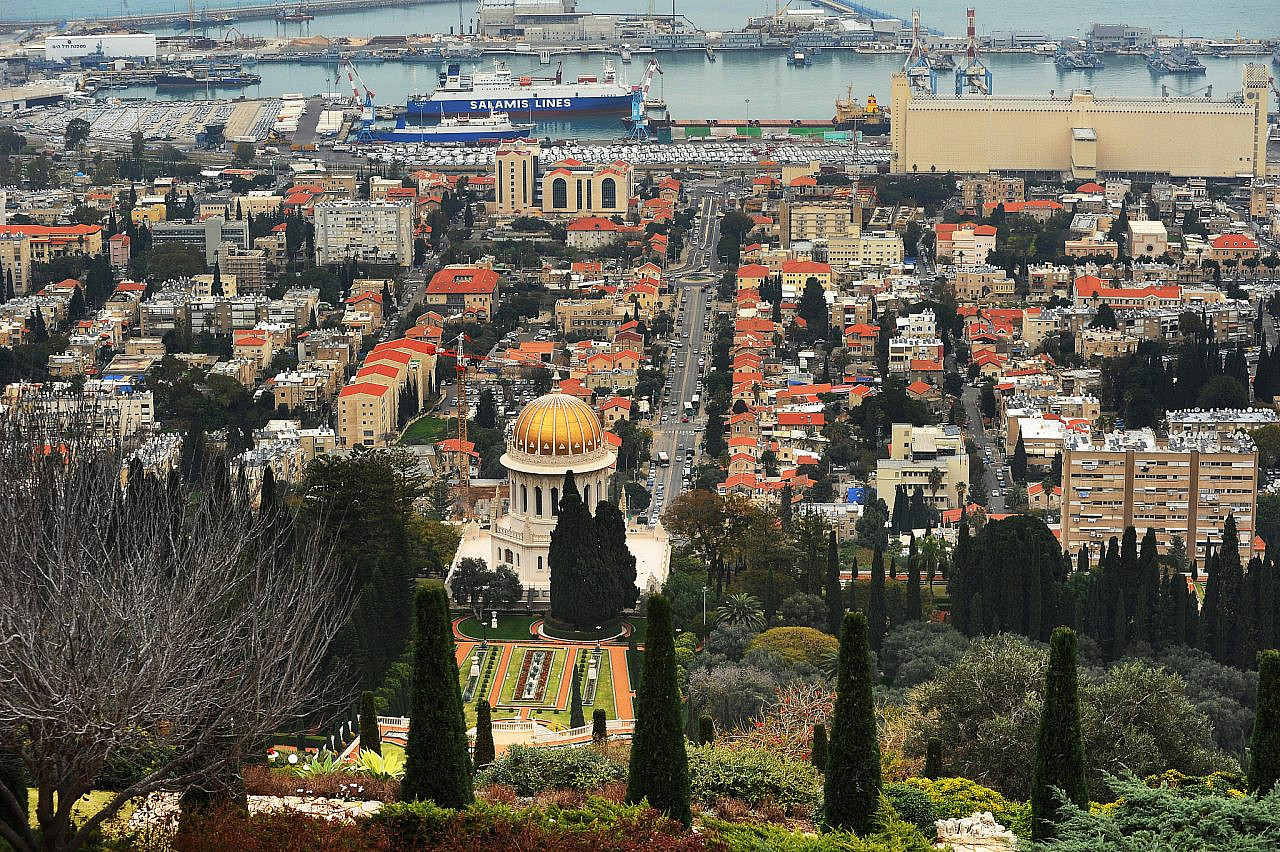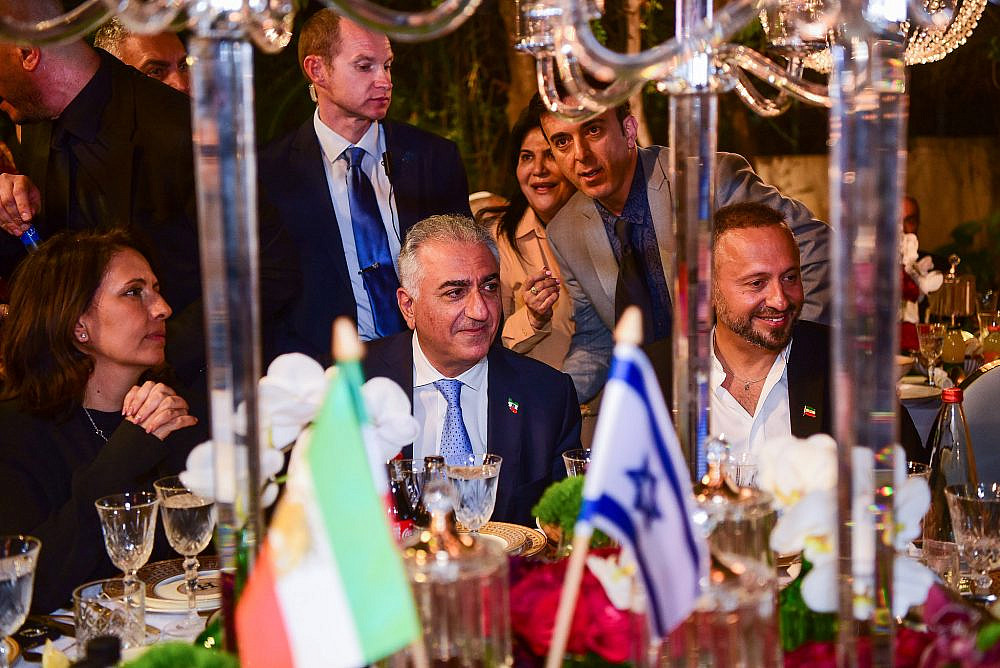Reza Pahlavi, the son of the late, exiled former Shah of Iran, completed a whirlwind tour of Israel last week, which had been announced only days before his departure. To Iranians in the diaspora, Pahlavi has become a face of the opposition to the Iranian regime, routinely speaking out against the state’s rulers and calling for the continuation of the protests that erupted eight months ago in the wake of Mahsa Amini’s murder in September 2022 while in the custody of Iran’s “morality police.”
Pahlavi is also a part of the Alliance for Freedom and Democracy in Iran, a newly formed opposition front comprising Pahlavi, Nobel Peace Prize laureate Shirin Ebadi, exiled journalist and women’s rights activist Masih Alinejad, actress Nazanin Boniadi, secretary general of the Kurdish Komala Party Abdullah Mohtadi, and activist Hamed Esmaeilion — although Esmaeilion announced his departure from the coalition last week, and it appears that Boniadi may have withdrawn too. Given the timing, some speculate that Pahlavi’s visit to Israel instigated their exits.
Even as Iranians around the world have, since the killing of Amini and countless other innocent Iranians by the country’s security forces, come together to envision, dream, and begin to create a truly democratic, open Iran, Pahlavi’s trip to Israel has received limited pushback. Against the backdrop of a global movement for democracy and freedom of speech and religion in Iran, most Iranians, particularly Iranian-Americans, have at best remained silent while Pahlavi has essentially given his backing to an apartheid state that is carrying out many of the same authoritarian practices he accuses the Iranian regime of perpetrating.
Pahlavi’s visit was ostensibly undertaken in the name of a free Iran, democracy, and Iranians ourselves; in response, many Iranians in the diaspora have been echoing his call for “peace” between Israel and a democratic Iran through a potentially U.S.-brokered “Cyrus Accords,” taking a page out of the highly contested Abraham Accords’ book. The minority of Iranians who have criticized Pahlavi have often been branded as regime sympathizers, and Pahlavi’s hypocrisy — like that of the Iranian community as a whole — stands broadly unchallenged.

During their visit to occupied East Jerusalem, Yasmine Pahlavi, Reza Pahlavi’s wife, shared a photo on her Instagram of a female Israeli soldier with the hashtag #ZanZendegiAzadi (“woman, life, freedom”), the rallying cry of the Iranian resistance. Soon thereafter, she shared an Instagram story calling for the release of imprisoned Iranian rapper Toomaj Salehi. The hypocrisy is stark — condemning one violent military for arbitrary detention, and lauding another that terrorizes and arbitrarily arrests Palestinians just like Salehi every day, while co-opting the slogan that symbolizes freedom for all of us. Yasmine Pahlavi would later highlight a mural honoring Iranian women in the Israeli city of Netanya, which was built on the ruins of the Palestinian village of Umm Khalid, whose residents were expelled from their homes in 1948.
In addition to meetings with Prime Minister Benjamin Netanyahu, who leads the most right-wing government ever seen in Israel, Pahlavi also met with Intelligence Minister Gila Gamliel, who oversees Mossad and Shin Bet operations as well as surveillance of and intelligence-gathering on Palestinians, deploying many of the same tactics as the current Iranian regime. Both Israel and Iran’s current governments have effectively set up surveillance states, exercising and retaining nearly complete control of the countries’ information and communication technology systems, as authoritarian regimes are wont to do.
The Israeli military relies on facial recognition technology to track and surveil Palestinians, far beyond the nearly 200 checkpoints set up throughout the occupied West Bank. So, too, does the Iranian government, which has recently begun using surveillance technology, including facial recognition, to enforce compulsory hijab and track Iranian women who remove it in public.
Even though Israel’s tech sector produces the tools used to surveil Palestinians, Pahlavi justified a partnership with it in order to capitalize upon Israel’s expertise and water technology to mitigate Iran’s water crisis, the result of decades of mismanagement by the Iranian regime. Moreover, Israel’s water apartheid has systematically curtailed and denied Palestinians access to water; relying on Israel’s water resources would not only make Iran complicit in rights abuses against Palestinians, but also, by extension, make the Iranian government precariously dependent on Israel.
Pahlavi’s decision to accept an invitation from and propose cooperation with such an extremist government, which has been facing widespread internal and global censure for its anti-democratic practices, could have far-reaching and devastating consequences for Palestinians and the region at large. In this ostentatious display of soft power, he has harkened back to particular points of the relationship that his father, the Shah, had with the State of Israel in the aftermath of its establishment. That relationship drove mutual economic profit contingent upon the normalization of occupation, which could very well become a byproduct of the modern-day Iranian revolution.
The Shah’s complicated love affair with Israel
In 1950, two years after the Nakba, Iran granted the newly established state of Israel de facto recognition when it opened its embassy in Jerusalem. Iran was then — and remains — home to one of the largest Jewish communities in the Middle East, including many who fled persecution in Iraq during the 1940s. Most Iranian Jews did not emigrate to Israel upon its establishment, but rather at the time of the Islamic Revolution in 1979.

The love child of Israel and Iran’s affair came in 1957 — in the wake of the U.S.-backed coup to overthrow Prime Minister Mohammed Mossadeq four years earlier — when the CIA and Mossad came together to create and help train SAVAK, Iran’s infamous and violent secret police during the Pahlavi reign. They tortured and terrorized political dissidents en masse, using many of the same tactics that the current regime has deployed to repress protesters in Iran over the past several months.
This alliance made sense. Mohammed Reza Pahlavi, Reza Pahlavi’s father and the Shah, had been in power since 1941. Although beloved by many Iranians, he oversaw a deeply repressive and undemocratic regime that did not tolerate political opposition; he had upwards of 3,000 dissidents in prison in his later years. In large part, he was only able to retain his reign due to the backing (read: intervention) of the U.S. and U.K. governments.
Building on their military ties, Iran would become part of Israel’s “Periphery Doctrine,” an alliance with non-Arab Muslim states proposed by Israel’s first prime minister, David Ben-Gurion, during the country’s early years, also comprising Turkey, Ethiopia, and minority groups in Lebanon and Iraq. Iran and Israel also saw in each other a mutual desire for secularism and Westernization, and the Israeli government curried favor in the hearts of Iranians when Israeli architects supported relief and reconstruction efforts in the wake of the 1962 earthquake that ravaged Qazvin.
Then-Agriculture Minister Moshe Dayan — who would later assume the role of defense minister during the 1967 Six-Day War — spearheaded a team that would take on water planning, rural land development, and architectural design in Iran, thus creating inroads among many Iranian Jews at the time. This created an opportunity for the Shah and Israel’s government to jointly pursue a modernization plan within Iran and the wider Middle East.
In 1968, under the Shah’s rule, Israel and Iran established economic relations to create the Eilat Ashkelon Pipeline Company. The deal allowed for Iranian oil to be shipped to the Israel’s Red Sea port of Eilat (known before the Nakba as Umm Al-Rashrash), and then trucked overland to Ashkelon (Al-Majdal and Al-Asqalan), to bypass Egypt’s costly Suez Canal. From Ashkelon, the oil was shipped off to buyers in Europe and across the world, generating profits for both Israel and Iran. Pahlavi would refuse to join the 1973 Arab oil embargo in response to the Arab-Israeli War of that year — known to Israelis as the Yom Kippur War and to Palestinians as the October War — and continued supplying Israel with oil.
The 1979 Islamic Revolution and overthrow of the Shah effectively saw an end to all formal economic and diplomatic ties with Israel. It also saw the rise of a regime that would sanction the persecution of religious and ethnic minorities, most notably the Baha’is. The largest non-Muslim minority in Iran, and one of the country’s most severely oppressed groups, Iranian state policy actually sanctions the Baha’is’ persecution, allowing for their active exclusion from educational and employment opportunities. And last year, myriads of Baha’is faced arbitrary detention, mandated ankle monitors, and the demolition of their homes and businesses by the government — once again, many of the same tactics used by the Israeli government against Palestinians.

During his trip, Reza Pahlavi visited the Baha’i world headquarters in Haifa — a city which used to have a Palestinian majority and was a major Palestinian cultural hub until the Nakba. Yet even as Iranians in Iran and the diaspora condemn the Iranian regime for its human rights abuses against minorities including Baha’is, Baluchis, and Afghans, they have largely declined to condemn a visit that normalizes the apartheid regime Israel has created and institutionalized, thus turning a blind eye to the human rights abuses the Israeli regime commits against Palestinians, and a plethora of other groups.
A slippery slope from the Abraham Accords to the Cyrus Accords
Spurred by the Abraham Accords, more and more Middle Eastern states are pursuing an unprecedented normalization of relations with Israel, and establishing diplomatic, economic, and military ties, as modeled by the United Arab Emirates and Bahrain in the agreement orchestrated by the Trump administration in 2020.
In terms of the Palestinian struggle for liberation, normalization means the effective exoneration of the Israeli government — and a green light for continued impunity, annexation, and occupation. In spite of the BDS call issued in 2007 by Palestinian civil society, which offers clear and specific guidance for opposing the establishment of “normal” ties with the State of Israel in solidarity with and recognition of Palestinians’ rights, Arab and African countries have pushed forth with normalization through exports and exchanges of arms, surveillance technology, and military tactics.
The Abraham Accords serve as the dangerous inspiration and impetus for the Cyrus Accords that Pahlavi mentioned in his press release. Such normalization would be devastating for Iranians and Palestinians alike: it would likely bring further exports of Israeli surveillance technology and tactics to Iran, and potentially further bolster Israel’s ability to act with impunity against Palestinians.
Palestine remains a divisive topic for Iranians in the diaspora. Many younger Iranians, such as myself, are heavily involved in Palestine solidarity organizing; however, historical memory of Palestinian support for Saddam Hussein during the Iran-Iraq War — in parallel to Israeli support for Iran — as well as the current regime’s continued support of Palestinian armed forces colors the opinions of many others. Meanwhile, thousands of Iranians inside Iran remain vocally supportive of Palestinians rights.
When Iranians chant, demand, and fight for zendegi (life) and azadi (freedom) for women in Iran, we must also chant, demand, and fight for it for women in Afghanistan, Iraq, and Palestine. Opposing the normalization of ties between Iran and Israel is critical not only to the Palestine solidarity movement, but also to radically imagining and creating a freer, more open, and truly democratic future for all communities across the region. Our struggles are interconnected, and that is and always will be the core tenet and responsibility of movement-building.

